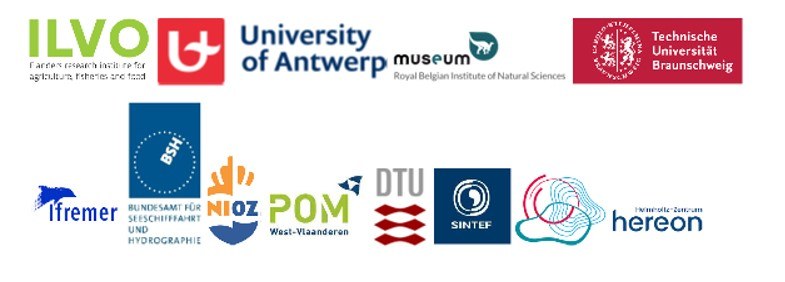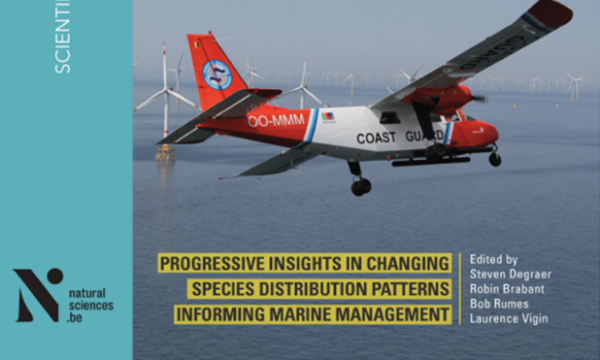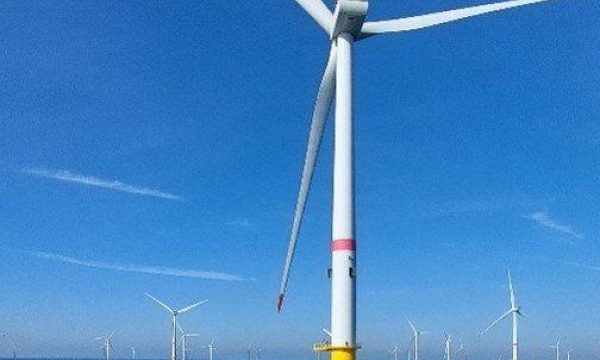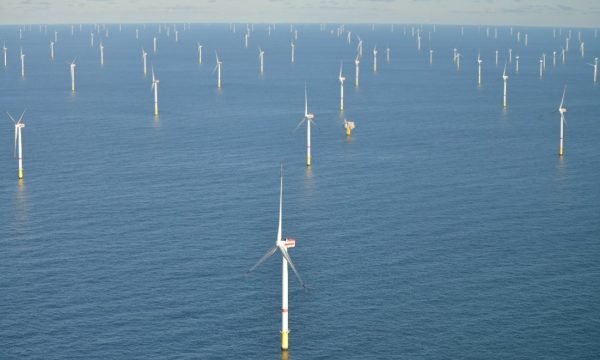Persbericht Offshore wind farms: clean energy with a hidden chemical footprint?

Offshore wind farms deliver a wide range of benefits—from clean energy to opportunities for marine aquaculture and nature protection. But one potential downside remains largely under the radar: chemical pollution. Could compounds leaching from turbine coatings or corrosion protection systems be affecting the marine ecosystem—or even the safety of aquaculture products?
Over the next four years, scientists from 11 leading European research institutions—including ILVO (Flanders Research Institute for Agriculture, Fisheries and Food), the Province of West Flanders, the University of Antwerp, and the Royal Belgian Institute of Natural Sciences—will investigate this question as part of the newly launched Interreg North Sea project called 'Anemoi' after the Greek gods of the winds.
Wind Farms at Sea: Room for More Than Just Energy
Offshore wind farms are a model for multi-use of marine space. In addition to generating renewable electricity, they offer promising zones for sustainable aquaculture and marine biodiversity, thanks to the ban on active fishing within the turbine zones and nature protections.
The North Sea is bracing for a major energy expansion. With Belgium’s new Princess Elisabeth Zone coming online, the country’s wind capacity in the North Sea will grow by an additional 3.5 gigawatts. Elsewhere in the region, plans are equally ambitious: by 2050, political leaders aim to increase offshore wind capacity tenfold—from 30 to 300 gigawatts.
Following the chemical trail
Named after the ancient Greek gods of wind, Anemoi focuses on the chemical footprint of wind farms. Turbines are equipped with anti-corrosion systems that can leach metals like aluminum and zinc into surrounding waters. Paint layers may release organic compounds. And as turbine blades age, cracks or flaking can release microplastics into the sea.
Sampling, Simulating, Understanding
Through a mix of offshore sampling and lab-based simulations, the project will identify both known and emerging chemical substances in the water and sediments around wind farms. Scientists will study how these substances spread and at what concentrations, using advanced ecotoxicological research to assess their impact on marine life and aquaculture products.
They’ll also analyze how these substances affect the food web—from individual chemical compounds to complex mixtures.
Science to Policy and Industry
Both policymakers and the offshore wind industry are closely involved in Anemoi. While national and EU-level regulations already exist to address chemical pollution, there’s still a need for a harmonized legal framework tailored to the unique conditions of the North Sea.
Anemoi aims to deliver exactly that—along with practical, eco-friendly alternatives and best practices. The goal? To ensure offshore wind energy continues to grow—sustainably
First big event in Hamburg in May 2023
Anemoi’s first major event took place on May 30–31, 2023, in Hamburg, Germany. Scientists, industry leaders, and policymakers gathered to share knowledge, assess potential risks, and start outlining solutions to reduce the chemical footprint of offshore wind power.
About the Project
The Anemoi Project runs from 2023 to 2027 and is funded by Interreg North Sea, with co-financing from the Province of West Flanders and VLAIO.
More info: www.interregnorthsea.eu/anemoi



